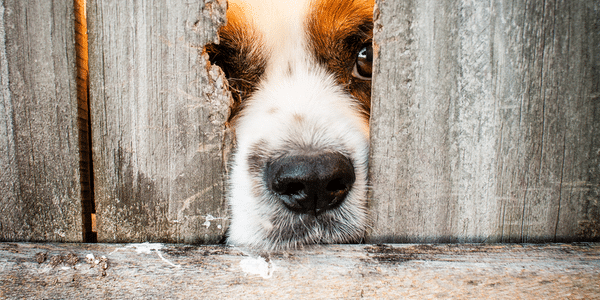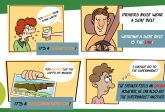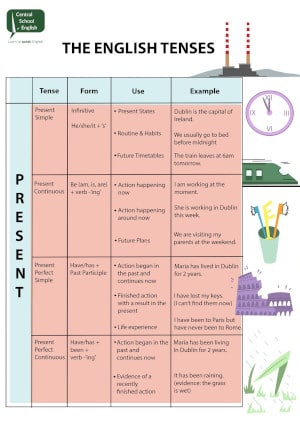Relative Clauses

Hello grammar lovers! This blog post is an extra special treat for all the grammar nerds out there. Why? Because I’ll be looking at one of the more “interesting” areas of grammar…relative clauses!
If you’re not a grammar nerd, please bear with me anyway. Relative clauses are an important part of English grammar and you will feel a great sense of achievement once you have mastered them. So let’s get stuck in!
What is a clause?
There is no point in talking about relative clauses if we are not sure what a clause is, is there?
So let’s begin by looking at the meaning of clause.
In the grammatical sense, a clause is any group of words that contains a subject and a main verb. The most basic clauses have just two of three words. Here are some examples:
Subject Verb
She works
We eat
Children play
Every sentence has at least one clause. The above clauses are also very simple sentences. However, most sentences have more information. For example:
She works in a bank.
We eat dinner at 6 o’clock.
Children play games after school.
These sentences still only contain one clause as they have one subject and a main verb. Of course, many sentences in both written and spoken English consist of more than one clause.
Relative Clauses
So now we know that every sentence contains at least one clause. The most important information in a sentence is in the main clause. Every sentence has a main clause. But often we want to give more information in a sentence.
One way of adding more information to a sentence is by adding more clauses to the main clause! There are several types of clause that we can use to add more information to a sentence. In this blog post we are going to focus on relative clauses.
What is a relative clause?
A relative clause is a clause that gives information about a noun. We can compare relative clauses to adjectives.
Adjectives are words that describe nouns. For example:
The rich woman lives in the mansion.
In this sentence the adjective rich describes the noun woman.
Relative clauses are clauses that describe nouns. For example:
The woman who is rich lives in the mansion.
In this sentence the clause who is rich describes the noun woman.
This sentence has two clauses:
Main clause: The woman lives in the mansion.
Relative clause: who is rich
Another way to think about relative clauses is as a way of putting two sentences together. For example the two sentences:
The woman lives in the mansion.
The woman is rich.
Becomes:
The woman who is rich lives in the mansion.
or
The woman who lives in the mansion is rich.
By putting information in the main clause, we make it more important than the information in the relative clause.
Here are some more examples of sentences with relative clauses. The relative clauses are in bold.
The man who is wearing a suit is an accountant.
The student that is sitting down failed the exam.
The cat which has a black tail killed the bird.
As you can see in the examples above, the relative clause is normally in the middle of the main clause.

Relative pronouns – people
We begin each relative clause with a relative pronoun. Three common relative pronouns are who, that and which.
We can use the relative pronoun who or that when we are speaking about people.
For example these two sentences:
The woman is a doctor. She lives next door
can be rewritten using the relative pronouns who or that. We could say:
The woman who lives next door is a doctor.
We can also say:
The woman that lives next door is a doctor.
The sentences:
We know a lot of people. They live in London.
can be rewritten using the relative pronoun who or that:
We know a lot of people who live in London.
We know a lot of people that live in London.
Relative pronouns – animals and things
We can use the relative pronouns which or that when we are speaking about animals and objects (things).
For example, the following sentences can be rewritten using the relative pronoun that or which:
Mary has a dog. Her dog is red and brown.
can be rewritten as
Mary has a dog that is red and brown.
or
Mary has a dog which is red and brown.
The sentences:
I saw a beautiful car. The car was a Ferrari.
can be rewritten as
I saw a beautiful car that was a Ferrari.
I saw a beautiful car which was a Ferrari.
Relative Clauses
- We use relative clauses to describe nouns
- We put a relative clause immediately after the noun it describes
- We use relative pronouns such as who, which and that with relative clauses
- We use who and that for people
- We use which and that for animals and things
Vocabulary
Grammar lover: Someone who loves grammar. We also say music lover, movie lover etc.
Example: Like most music lovers, she’s always going to concerts.
Nerd: A person who is very interested in one subject and knows a lot about it.
Example: Joe is real comic book nerd.
To master something: To become an expert in something.
Example: One day I hope to master the game of chess.
To rewrite: To write something again.
Example: The teacher couldn’t read my writing so I had to rewrite the essay.
Idioms
Bear with me/somebody: To be patient when something is taking a long time to doExample: The computers in the school aren’t working at the moment. Please bear with us, they should be working again within the hour.
Get stuck in: To begin doing something at once with energy and enthusiasm.Example: Here’s dinner guys. Now get stuck in!
No point in doing something: An action won’t have a good result so it’s not a good idea to do it. Example: There’s no point in buying a car if you don’t have a license yet.
Test Yourself
Relative Clauses Video
Thank you for reading our post. You’ll find more English grammar tips elsewhere on our site and if you’d like information on our English courses in Dublin, please do not hesitate to contact us.






